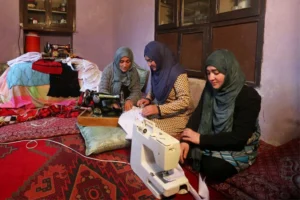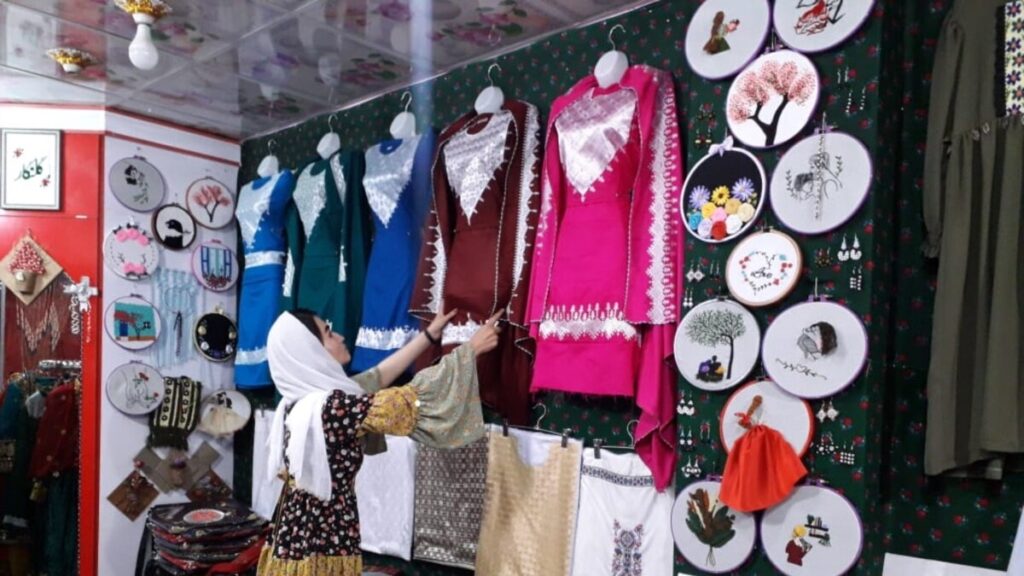Author: Mahdi Mozaffari
In traditional societies, where patriarchal norms and beliefs prevail, women face numerous challenges on their entrepreneurial journey. These barriers, deeply rooted in social structures, not only hinder the progress and empowerment of women in the economic sphere but also act as an invisible chain, restricting the development and advancement of the entire community.
Afghanistan serves as a concrete example of traditional societies where women entrepreneurs grapple with multiple obstacles. Gender inequality is deeply embedded in the fabric of this society, depriving women of equal opportunities. Among the manifestations of this inequality are the restrictions imposed on women’s education and employment.
Moreover, Afghan women entrepreneurs encounter significant difficulties in accessing financial resources and banking facilities. This makes it considerably harder for them to establish and manage businesses. Existing laws and regulations are often discriminatory and fail to provide adequate support for women entrepreneurs.
The barriers to women’s entrepreneurship in traditional societies have dire consequences for the entire community. Limiting half of the creative and innovative potential of society means losing valuable opportunities for development and progress. Therefore, overcoming these obstacles and empowering women entrepreneurs is an undeniable necessity for achieving a just, developed, and sustainable society.
The Role of Women as Nation Builders; Beyond Limitations on the Path to National Development
Throughout history, women have played a role that transcends their traditional duties, serving as foundational pillars of societies and advancing the development and progress of nations. The active presence of women in various fields, including entrepreneurship, is a testament to this claim. Multiple pieces of evidence indicate an increasing inclination among women to own small businesses and establish independent enterprises. This trend, alongside the growing employment rates for women at various levels, reflects the rising participation of women in the economic structures of societies.
Although there are no precise official statistics on the number of businesses owned or managed by women at the national (Afghanistan) and global levels, evidence suggests a significant growth in women’s entrepreneurship. Estimates indicate that women comprise about one-third of entrepreneurs worldwide.
Women’s entrepreneurship is a dynamic process in which women leverage their abilities and creativity to start a business. This requires taking on various risks and challenges but ultimately leads to job creation for themselves and others, as well as the independent management of an economic activity.
Women Entrepreneurs Operate in Various Forms:
- Individual Woman Entrepreneur: A woman who independently starts, organizes, and manages a business.
- Group of Women Entrepreneurs: A group of women who collaborate to establish and run a business together.
According to Schumpeter’s theory, an innovative woman entrepreneur is one who applies creativity and initiative to implement new ideas within a business framework. Karmal Singh, a prominent entrepreneur from Rajasthan, provides a comprehensive definition of a woman entrepreneur: “A woman entrepreneur is a confident and creative individual seeking economic independence, whether independently or in collaboration with others. By establishing and managing a business, she creates job opportunities not only for herself but also for others. Women entrepreneurs are founders or CEOs of businesses that offer unique products or services in the market and strive for national and global development.”

The Role of Women Entrepreneurs in National Development
Women’s entrepreneurship serves as a driving force that plays a vital role in the advancement and prosperity of societies. This influence affects various dimensions of national development through multiple pathways, bringing about positive and valuable outcomes. Below are the most significant of these outcomes:
- Reduction of Poverty and Inequality: Women entrepreneurs contribute directly to reducing poverty and inequality in society, especially among vulnerable groups, by creating job opportunities and generating income for themselves and others. Economic empowerment of women reduces class disparities and fosters social equality.
- Job Creation: The establishment of small and large businesses by women entrepreneurs generates new job opportunities for community members, particularly women, youth, and graduates. This helps decrease unemployment rates and leads to economic dynamism and growth.
- Economic Growth and Development: The entrepreneurial activities of women are considered a driving force for growth and economic development at both national and regional levels. The innovation, creativity, and production of new products and services by these empowered women contribute to an increase in Gross Domestic Product (GDP) and the enhancement of economic development indicators.
- Innovation and Creativity: Women entrepreneurs play a key role in advancing technology, diversifying products and services, and creating new solutions to various challenges with their creative minds and innovative ideas. This leads to dynamism and transformation in various economic, social, and cultural fields.
- Empowerment of Women: Entrepreneurship provides a suitable platform for empowering women from various personal and social aspects. Achieving economic independence, boosting self-confidence, enhancing skills and specialized knowledge, and actively participating in public spheres are among the positive outcomes of entrepreneurship for women.
- Sustainable Development: Women’s entrepreneurship, with a responsible and sustainable approach, contributes to environmental preservation, promotes social values, and fosters equitable and resilient communities. These women entrepreneurs think about conserving natural resources and improving the quality of life for future generations through sustainable production and consumption practices.
Despite the numerous benefits of women’s entrepreneurship, there are also several challenges they face in their endeavors. Lack of access to capital, gender discrimination, insufficient supportive infrastructure, and cumbersome regulations are among these challenges. This issue will be addressed in subsequent sections of this article.













